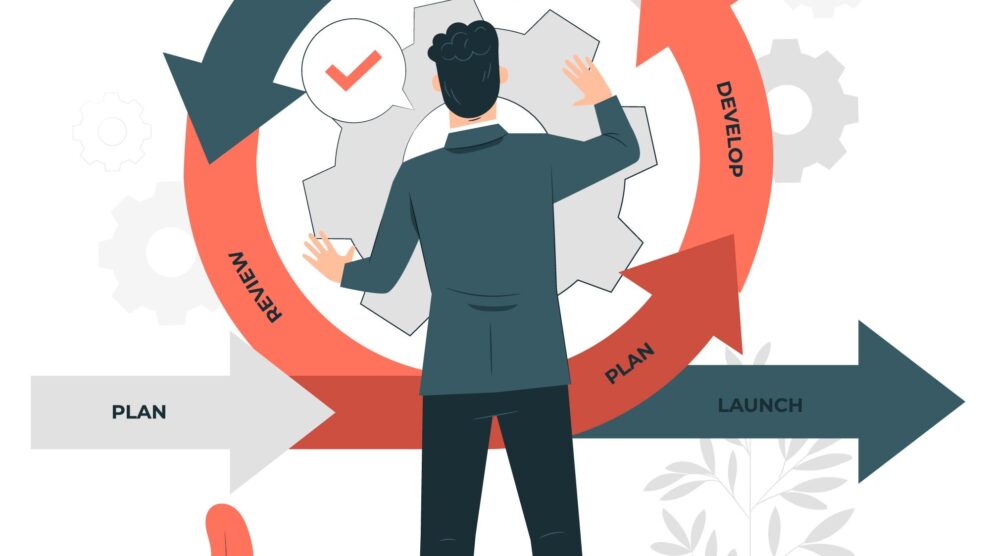Are you in sales and curious about how long it takes to close a deal? Are you looking for ways to shorten your average sales cycle? In this blog post, we’ll discuss the average sales cycle, what impacts it, and how you can use that knowledge to get more deals closed faster.
Introduction
The sales cycle is an important part of any business, and understanding the average sales cycle length can help you create budgets, track leads, and manage your customer relationships. The average Lead to Close length is 102 days, but this can vary based on factors such as the opportunity source, customer type, and product/service.
In this blog post, we’ll look at the different factors that can affect the length of a sales cycle and how this knowledge can be used to your advantage.
What is the Average Sales Cycle Length?
The Average Sales Cycle Length is an important metric to understand and measure, as it provides insight into the length of time it takes to close a deal. According to research, the average sales cycle length is 28.2%, with B2B companies typically taking 4-6 months to close a sale with new customers, and 6-9 months for larger deals.
Conversion rates for lead to opportunity average 13%, and the time it takes from initial contact with a lead to closing the deal can range from 6-12 months depending on variables like product/service type, complexity, size of the company selling it, etc. It’s important to track back to the beginning of a lead to determine their journey through the stages of the sales cycle, and this will help you better understand how long it takes for you to close deals.
Understanding the Lead to Close Length
Lead to close length is an important factor to consider when it comes to understanding the average sales cycle. Understanding the length of time from when a lead is generated to when a deal is closed can help businesses accurately plan and budget for sales. For instance, a B2B company estimated that it took them 1,240 days to close 10 deals, which meant that their average sales cycle was 33.25 days per deal.
It is important to note that this varies greatly depending on the source of the opportunity. For example, when selling to existing customers, companies are more likely to close the sale within 1-3 months. Additionally, repeat customers are known to have shorter sales cycles compared to new customers.
Factors That Affect the Sales Cycle Length
It is important to understand that the average sales cycle length can be affected by a variety of factors. As mentioned previously, the lead to close length can vary significantly depending on the source of the opportunity, whether it is an individual consumer or a B2B company. As such, the complexity, size of the company selling it, and product/service type can all affect the length of the sales cycle.
Additionally, annual planning cycles can also have an impact on sales cycle length, as do repeat customers, who often close in 1-3 months. All of these factors mean that it is important to take a thorough look at the length of your sales cycle and ensure that you are tracking back to the beginning of the lead.
Using Sales Cycle Length to Create Budgets
When it comes to budgeting, the length of the sales cycle is an important factor. Knowing how long it takes to close a deal can help you plan for the necessary resources, such as personnel and materials, that are needed to complete the sale.
It can also help you set realistic goals and timelines for reaching those goals. For example, if you know that it takes an average of six months to close a deal, you can plan for a certain number of sales within that timeframe. This can be especially helpful for businesses that have limited budgets and need to be strategic about how they allocate their resources.
The Impact of Repeat Customers on Sales Cycle Length
Repeat customers are a great way to increase sales and revenue. When selling to existing customers, companies were more likely to close the sale in 1–3 months. This is because they already know the customer, their needs, and how to deliver the product or service. As such, repeat customers can help reduce the sales cycle length.
Furthermore, it can have a positive impact on budgets as well. Companies can allocate more resources to acquiring new customers, as the overall sales process will be much shorter for existing customers. It’s important to track the performance of each lead and customer so that sales teams can easily identify repeat customers and adjust their strategies accordingly.
Tracking Back to the Beginning of the Lead
It is important to track back to the beginning of the lead to understand the sales cycle length. By taking the last 12 months of closed deals and tracking back to the beginning of the lead, you can gain a better understanding of how long it takes to close a deal.
This allows you to create a budget and plan for future deals. Additionally, it also helps to identify any potential issues that may be slowing down the process and allows you to address them quickly.
Understanding the Seven Stages of the Sales Cycle
The seven steps of the sales cycle are essential for a successful sale. Understanding these steps will help you hone your sales process and improve efficiency and effectiveness from initial contact to signing the contract.
These steps include initial contact, qualifying compatibility, analyzing needs or wants, making the pitch, product demos, closing the deal, and following up. Reaching out to leads for the first time can be difficult, so it’s important to have the plan to help increase your success rate.
Product demos are also important as they give prospects an in-depth look at what you are offering and how it can benefit them. By understanding the seven stages of the sales cycle, you can create a solid process that will help you close more deals.
The Impact of Company and Product/Service on Sales Cycle Length
The length of the sales cycle is also influenced by the company and the product or service being sold. Depending on the company, the sales cycle can take anywhere from 5-12 months. For example, an organization selling a complex product may have a longer sales cycle than one selling a simpler product.
The size of the company also affects sales cycle length. Companies with more resources might be able to close deals quicker, while smaller companies may need more time to finalize a deal. Additionally, services can generally close more quicker than products because they don’t require as much research and development.
What is the Average Length of a $100k Deal?
The length of a sales cycle can vary greatly depending on the deal size. For example, deals less than $2,000 in ACV typically close within 14 days, while deals over $100,000 may take up to 12 months. Even when the deal size is set, however, there are still several factors that can affect the length of the sales cycle.
Understanding these factors can help you plan your sales strategy and budget accordingly. For example, if your average deal size is $100,000, it may be beneficial to plan for a longer sales cycle than if the average deal size was lower. Additionally, the company you are working with and its product/service can also affect the length of the sales cycle.
It’s important to do research into these factors before setting out on a sales journey to ensure that you have properly planned for the full length of the sales cycle.
The Impact of Annual Planning Cycles on Sales Cycle Length
The annual planning cycle for many businesses can also impact the sales cycle length. Companies will often plan out their yearly budget and investments at the beginning of the year, so it’s important to factor in the timing of this when determining sales cycle length. Businesses may also have certain goals or objectives that need to be achieved by a certain time, which may also impact the sales cycle length.
Factors such as customer acquisition targets and customer satisfaction surveys can also affect the sales cycle length. It’s important to consider these factors when preparing a budget and timeline for a sales cycle.
Conclusion
In conclusion, understanding the average sales cycle length is an important part of any sales strategy. It provides valuable insights into how long it takes to close a deal and gives companies important information to help create budgets and adjust strategies.
Additionally, it’s important to understand the factors that affect the length of the sales cycle, such as the type of product/service, the company size, and their annual planning cycles. Finally, tracking back to the beginning of the lead can help companies better understand their sales cycles and make improvements as needed.





